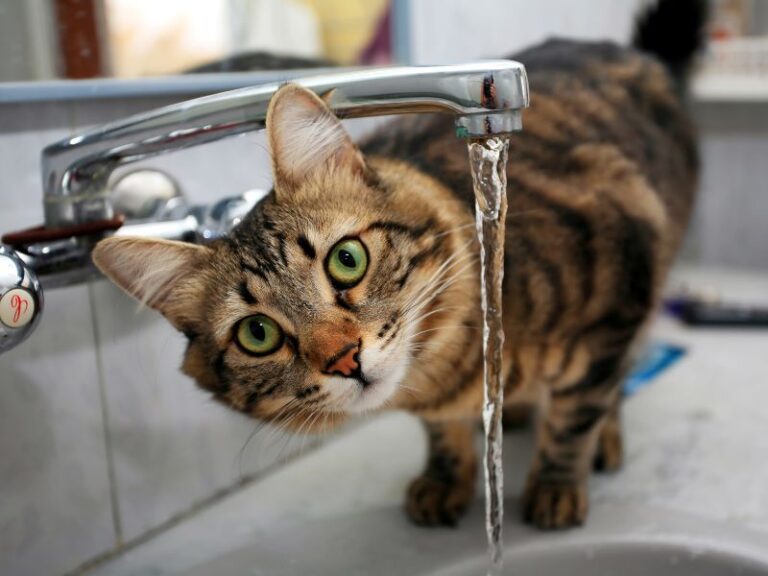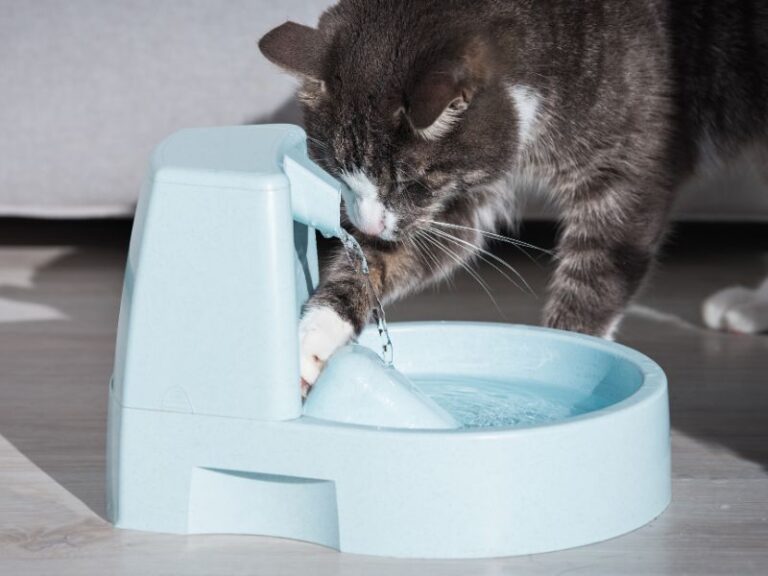Table of Contents
ToggleCats, much like humans, can suffer from anxiety and stress, affecting their overall well-being. Recognizing the signs of cat anxiety is crucial for responsible pet owners. By understanding the triggers and causes, we can take necessary steps to alleviate their distress. In this article, we’ll explore practical and effective ways to calm anxious or stressed cats, creating a harmonious environment for our beloved feline companions. Let’s embark on this journey to ensure our cats find tranquility and peace in their daily lives.
Signs and Symptoms of Cat Anxiety
Cats are incredibly adept at masking their emotions, making it challenging to recognize when they are feeling anxious. However, several common signs can indicate that our feline friends may be experiencing anxiety. By being attentive to these subtle cues, we can better understand their emotional state and provide the support they need.
- Excessive Grooming: Obsessive grooming leading to hair loss or skin irritation may indicate anxiety. Cats use grooming as a self-soothing mechanism during stressful times.
- Avoidance Behavior: Anxious cats become withdrawn, avoiding interactions with family and seeking secluded spots to retreat.
- Increased Aggression: Anxiety can trigger heightened aggression, with cats hissing, swatting, or biting more frequently, especially when feeling threatened.
- Changes in Appetite: Anxious cats may show altered eating habits, either overeating or losing interest in food altogether.
- Litter Box Issues: Anxiety can cause litter box problems, such as urinating outside the box or refusing to use it.
- Excessive Vocalization: Some cats vocalize excessively when anxious, expressing distress through meowing or yowling.
- Destructive Behavior: Cats may engage in destructive behaviors like scratching furniture or walls to release pent-up anxiety.
- Physical Symptoms: Watch for physical signs of anxiety, such as trembling, restlessness, or a tucked tail.
Understanding the Causes of Cat Anxiety
Cats, like sensitive beings, can experience anxiety due to a variety of triggers. Understanding these factors is essential for addressing their distress and creating a conducive environment for their well-being.
- Changes in the Environment: Sudden alterations in a cat’s surroundings can induce stress. Moving to a new home, rearranging furniture, or introducing new pets may contribute to their anxiety.
- Medical Issues: Physical discomfort or underlying health conditions can trigger anxiety. Pain, illness, or hormonal imbalances may manifest as behavioral changes indicating anxiety.
- Past Traumatic Experiences: Cats may bear emotional scars from past traumatic events, such as abuse or neglect. These experiences can continue to impact their behavior even in a safe environment.
- Lack of Socialization: Insufficient early-life socialization can make cats struggle with new people or unfamiliar situations, leading to anxiety.
- Separation Anxiety: Cats form strong attachments to their human companions. When left alone for extended periods, they may exhibit distressing behaviors due to separation anxiety.
- Fear of Loud Noises: Thunderstorms or fireworks can be extremely frightening for cats, causing anxiety.
- Multicat Household Dynamics: Living with other cats can sometimes cause stress, especially if there are dominance issues or conflicts over resources.
Also, check >> How to Help a Cat with Separation Anxiety
Creating a Safe and Comfortable Environment
A stress-free and comforting environment plays a vital role in alleviating cat anxiety and promoting their overall well-being. By implementing a few simple changes, we can create a sanctuary that offers solace and security to our beloved feline companions.
- Designate a Quiet Zone: Provide a peaceful corner away from noise and commotion for your cat to retreat to when feeling overwhelmed.
- Reduce Noise: Use white noise machines or soothing music to mask loud sounds, easing anxiety during thunderstorms or fireworks.
- Offer Elevated Spaces: Fulfill their desire for height by providing cat trees, shelves, or window perches for a secure vantage point.
- Create Hiding Spots: Offer covered beds, boxes, or cat caves where they can seek comfort during stressful moments.
- Maintain Routine: Stick to a consistent schedule for feeding and playtime to foster stability and security.
- Use Cat Calming Products: Utilize pheromone-infused sprays or diffusers to create a calming atmosphere.
- Limit Visitors and Noise: Plan ahead for guests and create a designated “safe room” for your cat to relax in.
- Gradual Introductions: Introduce new pets or changes gradually to reduce overwhelm and anxiety.
- Provide Interactive Toys: Engage your cat with puzzle feeders or wand toys to relieve stress and stimulate their minds.
- Consider Natural Remedies: Explore herbal options like catnip or chamomile, with vet consultation, for relaxation support.
Also, check >> Tips for transitioning a cat to a new home or environment
Play and Mental Stimulation
Play and mental stimulation play a crucial role in reducing cat anxiety and promoting emotional well-being. Engaging our feline friends in interactive activities not only provides physical exercise but also enriches their lives by satisfying their natural instincts and curiosity.
- Reduces Stress: Playtime is an excellent outlet for cats to release pent-up energy and stress. Regular play sessions can help them cope with anxiety and promote relaxation.
- Distracts from Triggers: Engaging toys can distract cats from anxiety triggers, redirecting their focus to positive experiences.
- Boosts Confidence: Interactive play builds a cat’s confidence, making them feel more secure and less susceptible to anxiety.
- Strengthens Bond: Playtime with your cat strengthens the bond between you, fostering a sense of trust and security.
To keep your cat mentally stimulated and entertained
- Wand Toys: Wand toys with feathers, bells, or dangling objects mimic prey, stimulating your cat’s hunting instincts.
- Puzzle Feeders: Puzzle feeders challenge your cat to work for their food, keeping them mentally engaged during mealtime.
- Interactive Laser Pointers: Laser pointers can be captivating for cats, encouraging them to chase the elusive red dot for mental and physical stimulation.
- Treat Dispensers: Treat-dispensing toys provide a rewarding challenge, keeping cats focused on the task at hand.
- Catnip Toys: Catnip-filled toys can induce a state of bliss in some cats, promoting relaxation and reducing anxiety.
Using Pheromone Diffusers and Sprays
Pheromone diffusers and sprays are powerful tools for providing cat stress relief and creating a calming atmosphere in our homes. These products are designed to mimic the natural pheromones that cats release when they feel safe and content. By replicating these comforting scents, pheromone diffusers and sprays can effectively reduce stress and anxiety in our feline companions.
How Pheromone Products Work
- Mimicking Familiar Scents: Pheromone diffusers and sprays contain synthetic versions of feline facial pheromones, which cats use to mark their territory as safe and familiar. When they sense these familiar scents, it triggers a sense of security and well-being.
- Calming Effect: When cats perceive these synthetic pheromones, their brains interpret them as signals of safety and comfort. As a result, the cat’s stress response is dampened, leading to reduced anxiety and a more relaxed demeanor.
- Multi-Purpose Use: Pheromone products are versatile and can be beneficial in various stressful situations, such as introducing a new pet, moving to a new home, or during thunderstorms or fireworks.
Using Pheromone Diffusers
Pheromone diffusers are designed to be plugged into electrical outlets and release a steady stream of calming pheromones into the air. Place them in areas where your cat spends most of their time, such as the living room or bedroom, to create a calming environment.
Using Pheromone Sprays
Pheromone sprays are convenient for on-the-spot applications. They can be sprayed on bedding, furniture, or in a cat carrier before travel or vet visits. The calming effects help reduce stress and make unfamiliar places or situations more manageable for your cat.
Why Pheromone Products are Effective
Cats are highly sensitive to scents, and familiar odors can have a profound impact on their emotional well-being. By using pheromone diffusers and sprays, we tap into this powerful sensory aspect of our cats, providing them with a sense of security and comfort in challenging situations.
Gentle Handling and Patience
When dealing with anxious cats, patience and gentle handling are paramount for building trust and creating a positive association with interactions. An anxious cat may be more sensitive to touch and sudden movements, making it crucial to approach them with care and understanding. Here are some tips to help you navigate these interactions and promote cat calming:
- Respect Personal Space: Allow your cat to initiate interactions and respect their boundaries.
- Slow and Calm Approach: Approach your cat gently and calmly, speaking softly to reassure them.
- Use Treats and Positive Reinforcement: Reward your cat with treats and praise during interactions.
- Let Them Come to You: Sit or lie down at their level and let them approach you.
- Watch for Stress Signals: Be mindful of their body language to gauge their comfort level.
- Gradual Touching: Start with gentle strokes and gradually increase touch based on their comfort.
- Provide Safe Spaces: Offer hiding spots where they can retreat when feeling overwhelmed.
- Play for Bonding: Engage in interactive play to strengthen your bond.
- Be Consistent: Stick to routines to make them feel secure.
- Give It Time: Building trust takes patience and time. Allow them to adjust at their own pace.
Herbal and Natural Remedies
Herbal and natural remedies provide gentle alternatives for alleviating cat anxiety and promoting relaxation. Always consult a veterinarian before trying new treatments, but many cat owners find these remedies beneficial.
- Catnip (Nepeta cataria): Induces euphoria in cats with its natural relaxant, nepetalactone.
- Valerian Root (Valeriana officinalis): Calming effects due to mild sedative properties.
- Chamomile (Matricaria chamomilla): Soothing properties ease anxiety in cats.
- Lavender (Lavandula spp.): Pleasant scent calms both humans and cats.
- CBD (Cannabidiol): Derived from hemp, may help reduce anxiety in some cats.
- Music and Sounds: Gentle, soothing melodies promote relaxation.
- Calming Herbal Blends: Commercial blends are designed to calm cats using relaxing herbs.
Finals Words
Understanding and addressing cat anxiety is vital for ensuring the well-being of our beloved feline companions. By recognizing common signs and causes of anxiety, we can take proactive steps to alleviate their stress and create a safe, comfortable environment. Patience, gentle handling, and interactive play help build trust and a positive association with interactions, while herbal and natural remedies offer gentle alternatives for promoting cat calming and relaxation. As responsible pet owners, let us implement these tips and techniques to provide a happier and healthier life for our anxious cats, fostering a deep bond and a tranquil coexistence amidst the love and joy they bring into our lives.






